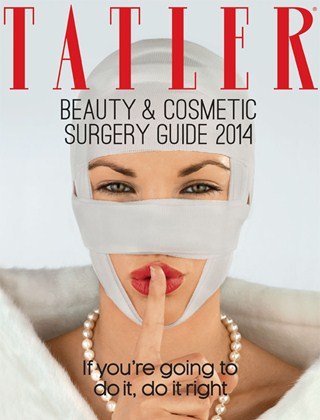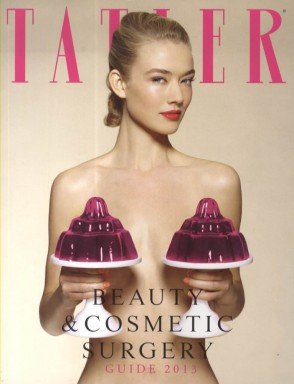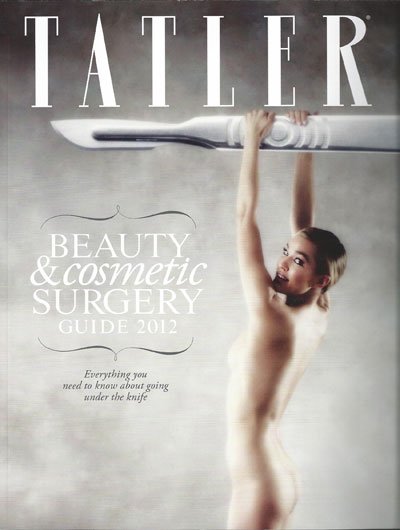Breast Enlargement
Overview
Breast enlargement, also known as breast augmentation or ‘boob-job’, services to enhance both breast size and shape. Breast enlargement surgery is the most commonly performed cosmetic operation in the UK. Properly performed it has a high rate of patient satisfaction.
Breast enlargement surgery is the most commonly performed cosmetic operation in the UK. Properly performed it has a high rate of patient satisfaction.
The procedure is appropriate for patients looking to increase the size and fullness of their breast and/or to correct minor sagging. Women who opt for breast enlargement surgery are usually those who have always had small breasts, or those who have lost breast volume after having children. In the last decade there has been a shift in the understanding of breast enlargement surgery.
While this type of surgery has always been a volume operation (in other words making breasts bigger), it is now also regarded as a reshaping operation, where the size and shape of the breast needs to sit naturally with the build and dimensions of the patient. This approach aims to achieve a more natural looking breast that does not exceed or damage the boundary of the breast.
CAUSE
The size of breasts is genetically determined. Once developed, the breasts may fluctuate in size in response to changes in weight, pregnancy and breast feeding.
The ageing process causes the shape of the breast to change so that they gradually droop over time (technical term – ptosis). This effect is greater following pregnancy, breast feeding and in particular after a large weight loss. Most women have breasts of slightly different sizes, but occasionally a very marked difference may develop.
OVERVIEW
Breast enlargement (enhancement) is a procedure to achieve an increase in size of the breast and also to have improvement in the shape by insertion of breast implants. Recently fat transfer is also becoming one of the methods to increase the volume of the breasts. Breast implants are placed either behind the breast or behind the muscle.
Both these placements have their pros and cons. Breast augmentation is suitable for patients who have naturally small breasts or a woman where there has been shrinkage in size following pregnancy or weight loss. Some patients are born with asymmetrical size and shape of their breasts and also there are some congenital breast deformities.
Some of these problems can be addressed by a combination of augmentation, reduction of opposite side or uplift. Mr Riaz has a vast experience of dealing with different types of breast problems and he will be more than happy to share with you before and after clinical photographs of different problems. You will be able to relate yourself to some of those clinical photographs. This will help you to visualise possible post-operative results after your augmentation.
Most of the patients just need simple breast augmentation but others need adjustments. The most challenging procedure is to perform breast augmentation and an uplift at the same time. Some of the patients have very saggy breasts and it is not possible to fill all the loose skin envelope with large breast implants and it is required to get the nipple/areolar complex at the right position and to reduce the excess skin to have a more natural and youthful appearance.
Some surgeons like to perform two procedures separately and most of the time the breast uplift is performed first followed by breast augmentation to reduce the risks. Mr Riaz is happy to perform breast augmentation and mastopexy as a combined procedure in most cases. Again, Mr Riaz will be more than happy to discuss the most suitable procedure for you and also will be able to discuss the different techniques and possible complications at the time of consultation.
IMPLANTS
Cost has never been an issue for Mr Riaz when choosing the make of implants for his patients. He has never used PIP or cheap implants. The breast implants rely on an outer shell and a filling which is usually silicone gel.
Mr Riaz only uses cohesive (silicone gel) filled implants which do not leak because the silicone gel is actually a solid material like jelly rather than a liquid. If you have the cohesive gel implants the gel just sits there rather than flowing away. The outer shell of the implant is either made of silicone with a smooth or textured surface. The most popular implants in our use are textured surfaced implants.
Mr Riaz uses both shaped or tear drop and round implants. Mr Riaz likes to help the patients to make a choice of shape of the implants suitable for their frame.
BIA-ALCL
This is a rare disease, Breast Implant Associated - Anaplastic Large Cell Lymphoma (BIA-ALCL) has been reported elsewhere in the world since 2010 and first case in UK was reported in 2012. No definitive cause is known but one of the possible factor can be textured surface of the implants and the way some patients react to having implants in place. At present the risk quoted of this rare disease is 1:28,000. It is important that while making the decision to choose the type of implant, you are aware of all the necessary information. A copy of Joint Statement between ABS, BAAPS, BAPRAS & MHRA on BIA-ALCL issued in July 2018 is attached.
POLYURETHANE SURFACED IMPLANTS
These implants are the same as cohesive gel filled and textured silicone surfaced shell implants but there is an outer layer of about 1mm of a chemical called polyurethane. These implants have become popular during the last few years in the UK. The most common long term complication of breast implants is capsule formation and capsule contracture, which can cause tightness of the scar tissue around the implant leading to pain, tightness and the breasts can go out of shape.
Capsule contracture in polyurethane implants is quoted to be the least common of all types of implants. Polyurethane implants form such a capsule that they are unlikely to get displaced and therefore there is less risk of bottoming out or rotation of the implants. Polyurethane implants are thought to be difficult to insert at the time of the operation due to high co-efficient of friction of the surface.
Mr Riaz has a vast experience of the use of polyurethane implants in both primary and secondary cases of breast augmentation. Mr Riaz will be able to offer you both textured silicone surfaced or polyurethane surfaced implants. These implants are not new on the market. The first ever textured surfaced implants were polyurethane surfaced implants. These implants have been in use for nearly 40 years and the surgeons who have used these implants have been very happy with the clinical results.
At the beginning it was not clear what happened to the breakdown products of polyurethane in the body and therefore their use was stopped in the USA but they have been continually used in South America, Europe and Australia. Polyurethane is used in a vast majority of medical devices and not only for sheath of breast implants.
There have been various clinical scientific studies which have quoted no significant increased risk of cancer due to breakdown products of polyurethane in the body. Mr Riaz will be more than happy to provide you literature and brochures provided by the manufacturers and will encourage you to do your own research before you choose the type of breast implant.
BREAST IMPLANTS
A breast implant consists of an outer shell and a filling material which is most often silicone gel or sometimes salt water (referred to as saline). Some implants are round and others are shaped more like a natural breast, referred to as tear drop or anatomical implants. Either can give excellent results. The manufacturers life expectancy of breast implants is 10 or more years, although implants can stay in without problems for a much longer time.
EXPECTATIONS & COMPLICATIONS
Breast augmentation has for many years been the most common cosmetic procedure in the UK which is testimony to its safety and ability to achieve a satisfying outcome in most patients. However no surgical procedure is without risk and understanding these risks as well as having a realistic expectation is essential. When any foreign material is inserted in the body it makes a protective coating around it which in most women forms a thin membrane that remains undetectable externally. In a few women however the reaction to the implant is greater and this is referred to as a capsule as the membrane becomes much thicker. The capsule around the implant can become thickened and contracted. The newer designs of implants have features to reduce the likelihood of this happening. This problem occurs to some extent in around 5 or 6% of patients and usually starts at about a year after surgery although it may take many years to become noticeable when looking at the chest. This can lead to pain, and/or an abnormally hard feel of the implant in the breast. Treatment may be needed and occasionally removal of the implant. Breast augmentation does not usually interfere in breast feeding, and there is no evidence that any silicone is found in breast milk. The presence of breast implants may interfere in mammography, which is an X-ray screening method for breast cancer. Special X-ray views can be taken to minimize this interference and studies have shown that the sensitivity of detecting a breast cancer in patients who have had implants is not reduced compared to normal women who do not have implants. Most women have some degree of asymmetry between breasts and breast augmentation may occasionally exaggerate this difference. A breast that has an underlying implant will not necessarily feel like a normal breast, and some women may be acutely aware of the implant as a foreign body within the breast. The size and shape of the breast following breast augmentation surgery will adjust with time and can be unpredictable. It is also not always possible to create a cleavage with breast augmentation. Please remember that the weight of the implant may influence the age-related changes that normally take place in breasts. Movement of the fluid which fills the implant may occasionally be seen through the skin, this being more likely in the saline (salt water) filled implants, and less likely in the more viscous silicone implants, which also have a more natural feel. Breast augmentation will always leave scars on the breast or in the armpit, and although the scars will settle over 12 or more months, the appearance of the scars does vary between different individuals. This scarring is placed in such a position as to minimize visibility even when wearing a swimming costume. Complications that occur with breast augmentation include those associated with all forms of surgery, as well as the specific problems of bleeding and infection. Any infection that may occur in the tissue around the implant can usually be treated with antibiotics, but may require surgical removal of the implant.
SAFETY OF SILICONE
Whatever the filling of the implant, the outer layer is made of silicone which is a firm type of material referred to as silicone elastomer. Silicon is a naturally occurring element which becomes silicone when it is combined with carbon hydrogen and oxygen. Silicone is manufactured into many items including cosmetics, foods and medical implants. Many studies have been conducted to establish whether silicone breast implants cause certain diseases. As a result of these studies we can say that at present there is no evidence to suggest that silicone breast implants are associated with an increased incidence of breast cancer. There is also no evidence to suggest that these implants cause autoimmune diseases such as rheumatoid arthritis.
PROCEDURE
Possible incision areas for breast implant. Implants placed either under the breast tissue or behind chest muscle. Breast enlargement surgery takes between one and one-and-a-half hours, and is done under general anaesthetic. The operation itself involves accessing and creating the pocket into which the implant will be placed, using one of the insertion routes mentioned above: breastcrease, armpit or nipple. Once the pocket has been created, the implant is inserted and the incision wounds are stitched. You may be able to go home the same day, but many patients will spend one night in hospital.
Post-operative pain in these procedures is easily controlled. Patients will be mobile from day one and should be back to full exercise within six weeks. Patients are recommended to take around two weeks off work immediately after the operation in order to ensure they recuperate fully.
The nature of the scars will depend on the technique that has been used. Scars tend to be quite red in the first six weeks, changing to purple over next three months and then fading to white. Most patients will form good quality scars over time.
VOTED UK'S BEST "BOOB" SURGEON
Mr Muhammad Riaz, once again voted as one of the UK's best cosmetic surgeons for Breasts, Tummies and intimate areas. That’s 5 consecutive years running.






